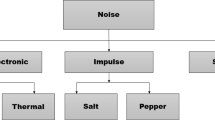Abstract
Compressed-sensing magnetic resonance imaging (CSMRI) aims to reconstruct the magnetic resonance (MR) image from highly undersampled K-space data. In order to improve the reconstruction quality of the MR image, this paper proposes a new gradient-based tight frame (TFG) learning algorithm (TFG-MRI) for CSMRI. TFG-MRI effectively integrates the tight frame learning technique and total variation into the same framework. In TFG-MRI, the inherent gradient sparsity of the MR image in gradient domain is utilized to represent the sparse prior knowledge, and the sparse priors in the horizontal and vertical gradient directions are exploited to learn adaptive tight frames for reconstructing the desired images. Particularly, we employ the l0-norm to promote the sparsity of the gradient image. The sparse representations of TFG are adapted for the horizontal and vertical gradient information of MR images. TFG-MRI can effectively help to capture edge contour structures in the gradient images, and to preserve more detail information of MR images. The experimental results demonstrate that the proposed TFG-MRI can reconstruct MR images more clearly in various sampling schemes. Compared with the existing MR image reconstruction algorithms, TFG-MRI can achieve higher accurate image reconstruction quality and better robustness to noises.





Similar content being viewed by others
References
S. Ravishankar, Y. Bresler, I.E.E.E. Trans. Med. Imaging 30(5), 1028–1041 (2011)
D.L. Donoho, I.E.E.E. Trans. Inf. Theory 52(4), 1289–1306 (2006)
E. Candes, J. Roberg, T. Tao, I.E.E.E. Trans. Inf. Theory 52(2), 489–509 (2006)
Y. Liu, J.F. Cai, Z. Zhan, D. Guo, J. Ye, Z. Chen, X. Qu, PLoS One 10(4), e0119584 (2015)
J. Huang, L. Guo, Q. Feng, W. Chen, Y. Feng, Phys. Med. Biol. 60(14), 5359–5380 (2015)
Y. Zhang, J. Yang, J. Yang, A. Liu, P. Sun, Int. J. Biomed. Imaging 2016(3), 9416435 (2016)
Y. Han, H. Du, X. Gao, W. Mei, IET Image Process. 11(3), 155–163 (2017)
J.P. Huang, L.K. Zhu, L.H. Wang, W.L. Song, Appl. Magn. Reson. 48(8), 749–760 (2017)
M. Lustig, D. Donoho, J. Pauly, Magn. Reson. Med. 58(6), 1182–1195 (2007)
S. Ma, W. Yin, Y. Zhang, A. Chakraborty, in 2008 IEEE Computer Society Conference on Computer Vision and Pattern Recognition (CVPR, Anchorage, Alaska, 2008), pp. 1–8
J. Huang, S. Zhang, D. Metaxas, Med. Image Anal. 15(5), 670–679 (2011)
J.P. Huang, W.Y. Liu, L.H. Wang, Y.M. Zhu, in 2014 IEEE 11th International Symposium on Biomedical Imaging (ISBI, Beijing, China, 2014) pp. 1063–1066
S. Ravishankar, Y. Bresler, in 2013 IEEE 10th International Symposium on Biomedical Imaging: From Nano to Macro (ISBI, San Francisco, CA, 2013), pp. 17–20
Q. Liu, S. Wang, L. Ying, X. Peng, Y. Zhu, D. Liang, I.E.E.E. Trans. Image Process. 22(12), 4652–4663 (2013)
J. Liu, S. Wang, X. Peng, D. Liang, Comput. Math. Method. M. 2015(1), 424087 (2015)
Y. Liu, Z. Zhan, J.F. Cai, D. Guo, Z. Chen, X. Qu, I.E.E.E. Trans. Med. Imaging 35(9), 2130–2140 (2016)
S. Ramani, J.A. Fessler, I.E.E.E. Trans. Med. Imaging 30(3), 694–706 (2011)
H. Liu, B. Song, H. Qin, Z. Qiu, IEEE Signal Process. Lett. 20(4), 315–318 (2013)
J.F. Cai, H. Ji, Z. Shen, G.B. Ye, Appl. Comput. Harmon. A. 37(1), 89–105 (2014)
S. Ravishankar, Y. Bresler, SIAM J. Imaging Sci. 8(4), 2519–2557 (2015)
Z. Xu, Q. Shi, IET Image Process. 10(12), 962–970 (2017)
Acknowledgements
We will sincerely acknowledge the anonymous reviewers for their hard work on this paper. This project was partly supported by China NSFC 61471313, and China Hebei NSFC F2014203076, and the Anhui Science and Technology University Foundation AKZDXK2015C02, and the Open Fund Project of CETC Key Laboratory of Aerospace Information Applications under Grant EX166290016. We gratefully acknowledge the financial support.
Author information
Authors and Affiliations
Corresponding author
Rights and permissions
About this article
Cite this article
Fan, X., Lian, Q. & Shi, B. Compressed-Sensing MRI Based on Adaptive Tight Frame in Gradient Domain. Appl Magn Reson 49, 465–477 (2018). https://doi.org/10.1007/s00723-018-0988-z
Received:
Published:
Issue Date:
DOI: https://doi.org/10.1007/s00723-018-0988-z




